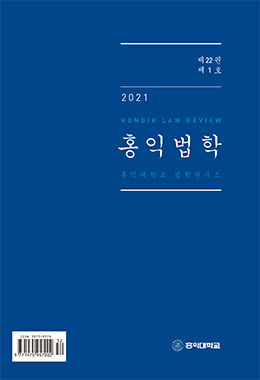1997년 신설, 2007년 개정, 그리고 2016년 전부개정에 따른 조문 위치 재정립 등을 거쳐 지금의 모습을 갖추게 된 상표법 제34조 제1항 제13호는 주지·저명상표가 아님을 악용하여 부정한 목적을 가지고 사용하려는 행위를 방지함으로써 공정한 거래질서를 형성하려는 입법자의 의사가 반영된 규정이다. 개정된 상표법 제34조 제1항 제13호는 ① 선사용상표가 특정인의 상품을 표시하는 것이라고 인식되어 있는 상표이고, ② 모방상표가 선사용상표와 동일·유사하며, ③ 부정한 목적을 가지고 모방상표를 사용해야 적용된다.
과거 대법원은 이 규정 신설된 후 10년 넘게 공서양속조항 해당 여부와 병렬적으로 판단해오고 있었으나, 2010년대 이후에는 제13호를 독립적으로 활용하고 경우에 따라서는 적용을 긍정하고 있으며, 대상판결도 그러한 흐름 속에서 등장하였다. 대상판결은 위 3가지 요건 충족 여부를 판단함에 있어 여러 요소를 종합적으로 고려한다는 취지를 내비치면서도, 판결 이유를 살피면 3가지 요건을 순차적으로 검토하여 각 요건의 특수성도 함께 살피고 있다. 특히 ① 선사용상표에 관하여 원심판결과 달리 2007년 개정 상표법의 취지를 반영하여 주지·저명성 판단을 배제한 점, ② 상표법 제34조 제1항 제13호가 ‘상품의 동일·유사’를 명문상 요건에서 배제하고 ‘상표의 동일·유사’만을 요건으로 했음을 정확히 반영한 점, ③ 부정한 목적의 존부 판단에 있어 경제적 견련관계가 중요한 요소가 될 수 있는 현실을 적극적으로 인정한 점 등에 비추어 볼 때, 대상판결은 매우 큰 의의를 지닌다.
이에 비해 상표심사기준은 1) 적용요건 부분에서 ‘부정한 기대이익’을 ‘부정한 목적’ 요건이 아닌 ‘특정인의 상품을 표시하는 것으로 인식될 것’이라는 요건 충족 여부에서 고려하여 표현상의 정합성이 부족하고, 2) 판단시 유의사항 부분에서 “본 호는 경제적 견련관계가 없는 경우에도 적용이 가능”하다는 표현으로 의도치 않은 혼선을 야기하여, 일반적으로 경제적 견련관계 여부에 대한 판단이 수반되어야 거래실정을 종합적으로 고려할 수 있음에도 이를 간과한 것처럼 오해될 소지를 불러일으키고 있다. 그러한 차원에서, 「부정한 기대이익」을 “부정한 목적” 요건의 하위 판단 요소로 이동시키고, “본 호는 상품이 비유사하거나 경제적 견련관계가 없는 경우에도 적용이 가능하며”라는 문구를 삭제하여 체계와 표현의 정합성을 추구하는 방향으로 나아가야 할 것이다.
Item 13 of Clause 1 of Article 34 of the Trademark Act, which was established in 1997, amended in 2007, and reorganized in 2016, reflects the legislators' intentions to form a fair transaction order by preventing the use with illegal purposes by exploiting less famous, less recognized trademarks. The Article 13 of the amended Trademark Act can be applied only to cases where ① a trademark is already well recognized as a particular company's product, or ② the imitation trademark is the same or similar to the original trademark, or ③ the trademark is used for an illegal purpose.
The Supreme Court has been making parallel judgments on whether or not this provision applies to public documents for more than a decade, but since the 2010s, it has independently utilized Article 13 and in some cases affirms its application, and objectives have emerged in such a trend. While the objective judgment suggests that multiple factors are considered comprehensively in determining whether the above three requirements are met, looking at the reasons for the ruling, the specificity of each requirement is also considered. In particular, unlike the original judgment on trademarks, ① item 13 of Clause 1 of Article 34 of the Trademark Act excluded the judgment of the state and reputation in 2007 and ② excluded only the same and similar trademarks from the requirements of the regulations, and ③ given the fact that economic ties can be an important factor in determining the existence of dishonest purposes, the objective judgment has immense significance.
In contrast, 1) the criteria for the screening of trademarks can be considered as inconsistent in terms of whether they meet the requirement for 'unfair expectation' rather than 'unjust purpose' requirements, and 2) whether they are applicable even if there is no economic relationship. At that level, it should move forward in the direction of pursuing conformity between the system and expressions by moving “unreasonable expectations” to sub-judgment elements of the requirement ‘unjush purpose’and removing the phrase “this issue is applicable even if the goods are figurative or have no economically joining relationship.”




